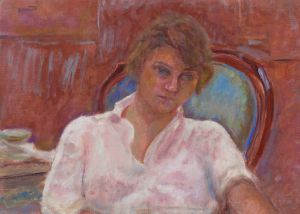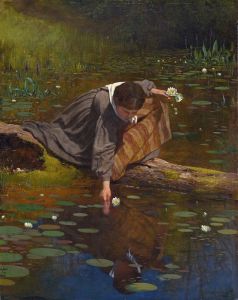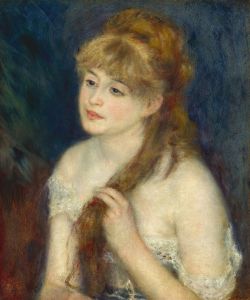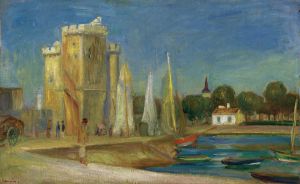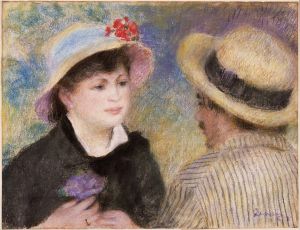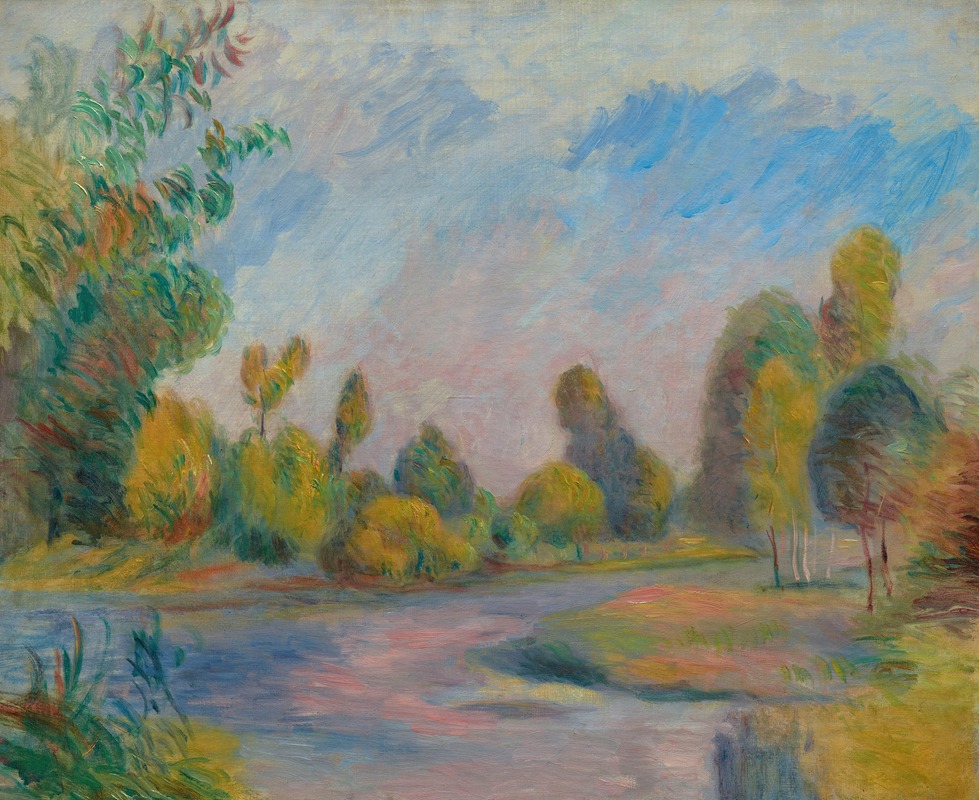
Au bord de la rivière
A hand-painted replica of Pierre-Auguste Renoir’s masterpiece Au bord de la rivière, meticulously crafted by professional artists to capture the true essence of the original. Each piece is created with museum-quality canvas and rare mineral pigments, carefully painted by experienced artists with delicate brushstrokes and rich, layered colors to perfectly recreate the texture of the original artwork. Unlike machine-printed reproductions, this hand-painted version brings the painting to life, infused with the artist’s emotions and skill in every stroke. Whether for personal collection or home decoration, it instantly elevates the artistic atmosphere of any space.
Pierre-Auguste Renoir's "Au bord de la rivière" (By the Water) is a notable example of the Impressionist movement, which emerged in France during the late 19th century. Renoir, a leading figure in this movement, is renowned for his vibrant light and saturated color, often focusing on people in intimate and candid compositions. "Au bord de la rivière" exemplifies these characteristics, capturing a serene and picturesque scene by the water.
Created in 1885, this painting reflects Renoir's transition from the more traditional Impressionist style to what is often referred to as his "Ingres period," where he began to incorporate more defined outlines and a smoother finish in his works. This period was influenced by his admiration for the neoclassical style of Jean-Auguste-Dominique Ingres, which is evident in the more structured composition and the careful attention to the human form in "Au bord de la rivière."
The painting depicts two young women seated by the riverbank, engaged in a moment of leisure. Renoir's use of light and shadow is masterful, as he captures the dappled sunlight filtering through the trees, creating a warm and inviting atmosphere. The reflections in the water are rendered with a delicate touch, showcasing Renoir's skill in portraying natural elements with a sense of immediacy and movement.
Renoir's choice of subject matter—a leisurely day by the water—reflects the Impressionists' interest in modern life and their desire to capture fleeting moments of beauty in everyday scenes. The relaxed poses of the women and the tranquil setting convey a sense of peace and contentment, inviting the viewer to share in this idyllic moment.
The palette of "Au bord de la rivière" is characterized by soft, harmonious colors, with gentle blues and greens dominating the scene. Renoir's brushwork is fluid and expressive, yet more controlled than in his earlier works, reflecting his evolving style during this period. The figures are integrated into the landscape, creating a sense of unity between the subjects and their surroundings.
"Au bord de la rivière" is housed in the Musée d'Orsay in Paris, which holds one of the most extensive collections of Impressionist and post-Impressionist masterpieces. The painting is a testament to Renoir's ability to blend the spontaneity of Impressionism with a more classical approach to composition and form, resulting in a work that is both innovative and timeless.
Renoir's influence on the art world is profound, and "Au bord de la rivière" remains a celebrated piece within his oeuvre. It exemplifies his unique ability to capture the essence of a moment with warmth and sensitivity, making it a cherished example of Impressionist art.







